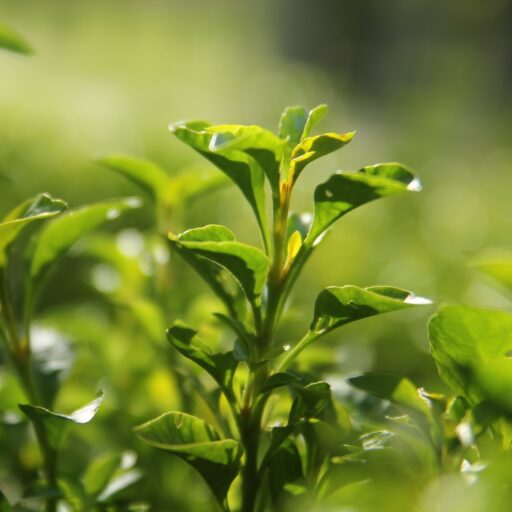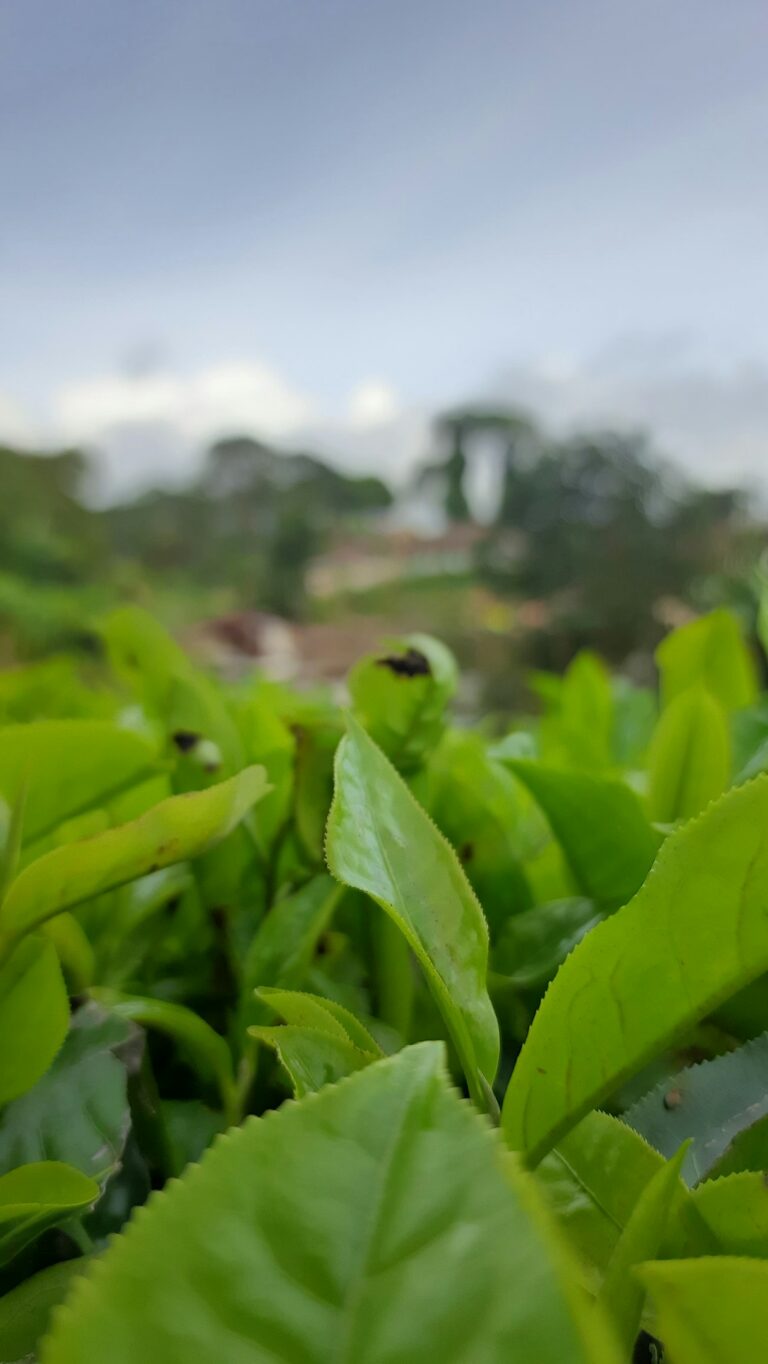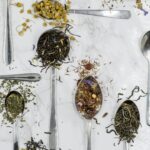Support our educational content for free when you purchase through links on our site. Learn more
[2023] How Hard is it to Grow Your Own Tea?
Are you a tea lover who has ever wondered what it would be like to grow your own tea? The idea of cultivating your own tea plants and crafting your own unique blends can be incredibly appealing. But just how hard is it to grow your own tea? In this comprehensive guide, we will explore the ins and outs of tea cultivation, providing you with expert advice and tips to help you embark on your tea-growing journey.
Table of Contents
- Quick Answer
- Quick Tips and Facts
- Background and History
- Choosing the Right Tea Plants
- Preparing the Soil and Climate
- Planting and Caring for Tea Plants
- Harvesting and Processing Tea Leaves
- Blending Your Own Teas and Beyond
- From Our Shop
- FAQ
- Conclusion
- Recommended Links
- Reference Links
Quick Answer
Growing your own tea can be a rewarding and enjoyable experience, but it does require some knowledge and effort. With the right tea plants, proper soil and climate conditions, and careful cultivation and processing techniques, you can successfully grow your own tea at home. It’s important to note that different types of tea plants have different requirements, so it’s essential to choose the right plants for your specific climate and growing conditions.
If you’re ready to start your tea-growing journey, here are some popular tea plant options to consider:
- Camellia sinensis (Tea Camellia): The most common tea plant used for producing black, green, white, and oolong teas.
- Mentha spicata (Spearmint): A refreshing herb often used for making herbal teas.
- Melissa officinalis (Lemon Balm): Known for its calming properties and lemony flavor, lemon balm is a popular choice for herbal teas.
- Matricaria chamomilla (Chamomile): Chamomile flowers are commonly used to make soothing herbal teas.
Quick Tips and Facts
Before we dive deeper into the world of tea cultivation, here are some quick tips and facts to get you started:
- Tea plants prefer acidic soil with a pH between 4.5 and 6.0. If your soil is alkaline, you may need to amend it with organic matter or use containers with acidic potting soil.
- Tea plants thrive in areas with mild temperatures and high humidity. They prefer temperatures between 50°F and 90°F (10°C to 32°C) and require at least 60 inches (150 cm) of rainfall per year.
- Tea plants can be grown in containers if you don’t have suitable garden space. Just make sure the containers have good drainage and are large enough to accommodate the plants’ root systems.
- Harvesting tea leaves is a delicate process. For the best flavor, pick the young, tender leaves and buds. Avoid harvesting leaves during or after rainfall, as they may become waterlogged and lose their flavor.
- Different tea types require different processing methods. Green tea is minimally processed, while black tea undergoes full oxidation. Oolong tea falls somewhere in between. Understanding the processing techniques is crucial for producing high-quality teas.
Now that you have a general idea of what it takes to grow your own tea, let’s explore the background and history of tea cultivation.
Background and History
Tea has a rich history that dates back thousands of years. Originating in China, tea quickly spread to other parts of Asia and eventually to the rest of the world. Tea has been enjoyed for its taste, aroma, and medicinal properties for centuries.
The tea plant, scientifically known as Camellia sinensis, is a member of the Theaceae family. It is an evergreen shrub that can grow up to 30 feet (9 meters) tall if left unpruned. The leaves of the tea plant are the primary source of tea production.
Tea cultivation requires specific environmental conditions, including the right combination of temperature, rainfall, and soil composition. Different tea-growing regions around the world have their own unique terroir, which contributes to the distinct flavors and characteristics of the teas produced there.
Now that we have a basic understanding of the background and history of tea cultivation, let’s explore the different tea plant varieties you can grow at home.
Choosing the Right Tea Plants
When it comes to growing your own tea, choosing the right tea plants is crucial. Different tea plant varieties have different flavor profiles, growth habits, and climate requirements. Here are some popular tea plant options to consider:
-
Camellia sinensis (Tea Camellia): This is the most common tea plant used for producing black, green, white, and oolong teas. It is a hardy plant that can tolerate a wide range of growing conditions. There are several cultivars of Camellia sinensis, each with its own unique flavor characteristics. Some popular cultivars include Assam, Darjeeling, and Yunnan.
-
Mentha spicata (Spearmint): While not a true tea plant, spearmint is a refreshing herb often used for making herbal teas. It has a pleasant, minty flavor and is relatively easy to grow. Spearmint plants can be invasive, so it’s best to grow them in containers or confined areas.
-
Melissa officinalis (Lemon Balm): Lemon balm is known for its calming properties and lemony flavor. It is a popular choice for herbal teas and can be grown in a variety of climates. Lemon balm plants are easy to grow and can be propagated from seeds or cuttings.
-
Matricaria chamomilla (Chamomile): Chamomile flowers are commonly used to make soothing herbal teas. Chamomile plants are easy to grow and produce beautiful, daisy-like flowers. They prefer full sun and well-drained soil.
These are just a few examples of tea plants you can grow at home. Depending on your climate and personal preferences, there are many other tea plant varieties to explore.
When choosing tea plants, consider factors such as the climate in your area, the space available for cultivation, and the flavor profiles you enjoy. It’s also a good idea to research specific cultivars and their growing requirements to ensure success.
Preparing the Soil and Climate
Tea plants have specific soil and climate requirements for optimal growth. Here are some key considerations when preparing the soil and climate for tea cultivation:
Soil Requirements
-
Acidity: Tea plants prefer acidic soil with a pH between 4.5 and 6.0. If your soil is alkaline, you may need to amend it with organic matter or use containers with acidic potting soil. Regular soil testing can help you monitor and adjust the pH levels as needed.
-
Drainage: Good drainage is essential for tea plants. They don’t like to sit in waterlogged soil, as it can lead to root rot and other diseases. If your soil has poor drainage, consider adding organic matter or creating raised beds to improve the drainage.
-
Nutrients: Tea plants require a balanced supply of nutrients for healthy growth. Before planting, it’s a good idea to amend the soil with organic matter, such as compost or well-rotted manure, to improve its fertility. Regular fertilization during the growing season can also help provide the necessary nutrients.
Climate Requirements
-
Temperature: Tea plants thrive in areas with mild temperatures and high humidity. They prefer temperatures between 50°F and 90°F (10°C to 32°C). Extreme heat or cold can stress the plants and affect their growth and flavor. If you live in a region with harsh winters, consider growing tea plants in containers that can be brought indoors during the colder months.
-
Rainfall: Tea plants require a significant amount of rainfall to thrive. They prefer areas with at least 60 inches (150 cm) of rainfall per year. If your region doesn’t receive enough rainfall, you may need to supplement with regular watering.
-
Sunlight: Tea plants prefer partial shade to full sun. They need at least a few hours of direct sunlight each day to produce healthy leaves. If you live in a hot climate, providing some shade during the hottest part of the day can help protect the plants from excessive heat.
By understanding and providing the right soil and climate conditions, you can create an ideal environment for your tea plants to thrive.
Planting and Caring for Tea Plants
Once you have chosen the right tea plants and prepared the soil and climate, it’s time to start planting. Here are some tips for planting and caring for tea plants:
-
Planting: Dig a hole that is slightly larger than the root ball of the tea plant. Place the plant in the hole, making sure the top of the root ball is level with or slightly above the soil surface. Backfill the hole with soil, gently firming it around the plant. Water thoroughly after planting.
-
Spacing: Tea plants should be spaced about 3 to 5 feet (0.9 to 1.5 meters) apart to allow for proper air circulation and growth. If you’re planting multiple tea plants, make sure to leave enough space between them.
-
Watering: Tea plants require regular watering, especially during dry periods. Keep the soil consistently moist but not waterlogged. Avoid overhead watering, as it can promote fungal diseases. Instead, water at the base of the plants to ensure the roots receive adequate moisture.
-
Mulching: Applying a layer of organic mulch around the base of the tea plants can help conserve moisture, suppress weeds, and regulate soil temperature. Use materials such as straw, wood chips, or compost for mulching.
-
Pruning: Pruning is essential for maintaining the health and shape of tea plants. Remove any dead, damaged, or diseased branches regularly. Prune the plants in early spring to promote new growth and maintain a compact shape.
-
Pest and Disease Control: Tea plants can be susceptible to pests and diseases, including aphids, mites, and fungal infections. Monitor your plants regularly and take appropriate measures to control pests and diseases. Organic pest control methods, such as neem oil or insecticidal soap, can be effective in managing common tea plant pests.
By following these planting and care guidelines, you can ensure the health and vitality of your tea plants.
Harvesting and Processing Tea Leaves
One of the most exciting parts of growing your own tea is harvesting and processing the leaves. Here’s a step-by-step guide to help you through the process:
-
Harvesting: Tea leaves are best harvested when they are young and tender. For the best flavor, pick the top two leaves and the bud. Avoid harvesting leaves during or after rainfall, as they may become waterlogged and lose their flavor.
-
Withering: After harvesting, spread the tea leaves out in a single layer on a clean, dry surface. Allow them to wither for several hours or overnight. This process helps remove excess moisture from the leaves and prepares them for further processing.
-
Oxidation: Oxidation is a crucial step in the processing of black and oolong teas. To oxidize the leaves, gently bruise or roll them to break the cell walls and expose the enzymes to oxygen. The oxidation process can take anywhere from a few hours to several days, depending on the desired tea type and flavor.
-
Drying: After oxidation, the tea leaves need to be dried to stop the oxidation process and remove any remaining moisture. This can be done by gently heating the leaves in an oven or using a specialized tea drying machine. The drying process helps preserve the flavor and aroma of the tea.
-
Storage: Once the tea leaves are completely dry, store them in airtight containers away from light, heat, and moisture. Proper storage will help maintain the freshness and quality of the tea.
It’s important to note that the processing techniques can vary depending on the type of tea you want to produce. Green tea, for example, is minimally processed and requires steaming or pan-frying to halt oxidation. Oolong tea undergoes partial oxidation, while black tea is fully oxidized. Understanding the specific processing techniques for each tea type is essential for producing high-quality teas.
Blending Your Own Teas and Beyond
Now that you have successfully grown and processed your own tea leaves, it’s time to get creative and start blending your own teas. Blending allows you to experiment with different flavors and create unique tea blends that suit your taste preferences. Here are some tips for blending your own teas:
-
Start with a Base Tea: Choose a base tea, such as green, black, or oolong, to form the foundation of your blend. The base tea will provide the main flavor profile and body of the blend.
-
Add Flavorful Herbs and Spices: Experiment with adding herbs, spices, and other flavorings to enhance the taste of your blend. Some popular additions include mint, chamomile, lavender, cinnamon, and citrus peels. Be creative and try different combinations to find your perfect blend.
-
Consider Health Benefits: Many herbs and spices used in tea blends have their own unique health benefits. Research the properties of different herbs and spices to create blends that not only taste great but also offer potential health benefits.
-
Experiment with Ratios: Start with small quantities of each ingredient and experiment with different ratios to find the right balance of flavors. Keep notes of your experiments so you can recreate successful blends in the future.
-
Store and Label Your Blends: Once you have created your tea blends, store them in airtight containers and label them with the ingredients and brewing instructions. This will help you keep track of your blends and ensure they stay fresh.
Beyond blending your own teas, you can also explore other tea-related activities, such as hosting tea tastings, sharing your blends with friends and family, or even starting a small tea business. The possibilities are endless!
From Our Shop
If you’re looking for high-quality tea plants, seeds, or other tea-related products, be sure to check out our shop. We offer a wide selection of tea plants, gardening tools, and accessories to help you on your tea-growing journey. Shop Now
FAQ
What is the easiest tea to grow?
The easiest tea to grow for beginners is often Mentha spicata (Spearmint). Spearmint is a hardy herb that can tolerate a wide range of growing conditions. It is relatively low-maintenance and can be grown in containers or in the ground. Spearmint leaves can be harvested and used to make refreshing herbal teas.
Read more about “The Ultimate Guide to Growing Herbs for Your Personal Tea Blends …”
Is growing tea profitable?
Growing tea can be profitable, but it requires careful planning, cultivation, and marketing. The profitability of tea cultivation depends on various factors, including the scale of production, quality of the tea, market demand, and production costs. It’s important to conduct thorough market research and develop a solid business plan before venturing into tea cultivation as a commercial endeavor.
Read more about “Will tea grow in the US? …”
How long does it take to grow your own tea?
The time it takes to grow tea depends on the specific tea plant variety and the desired tea type. Generally, tea plants take about 2 to 3 years to reach maturity and produce harvestable leaves. However, you can start harvesting leaves for making herbal teas from certain plants, such as mint or lemon balm, within a few months of planting.
Read more about “How long does it take to grow your own tea?”
Is it easy to grow your own tea?
Growing your own tea can be both rewarding and challenging. While some tea plants, like mint or lemon balm, are relatively easy to grow, others, like Camellia sinensis, require more specific growing conditions and care. Successful tea cultivation requires knowledge of the plants’ requirements, proper soil and climate conditions, and attention to detail during cultivation and processing. With the right information and dedication, growing your own tea can be a fulfilling experience.
Read more about “Is it easy to grow your own tea?”
Conclusion
Growing your own tea is a journey that combines passion, patience, and expertise. While it may require some effort and knowledge, the rewards are well worth it. By choosing the right tea plants, preparing the soil and climate, and following proper planting and care techniques, you can successfully grow your own tea at home.
Remember to experiment with different tea blends, explore the world of tea processing, and share your creations with others. Whether you’re a tea enthusiast or aspiring tea entrepreneur, the possibilities are endless.
For more information on tea cultivation and related topics, check out these recommended links:
- Green Tea Cultivation
- Herbal Tea Planting
- Soil and Climate for Tea
- Tea Plant Varieties
- 2023 Grow Your Own Black Tea: The Ultimate Guide
Recommended Links
- CHECK PRICE on: Tea Plants on Amazon | Tea Seeds on Amazon
- Shop Tea Tools and Accessories on: Amazon | Walmart | Etsy
- Shop Tea Books on: Amazon




